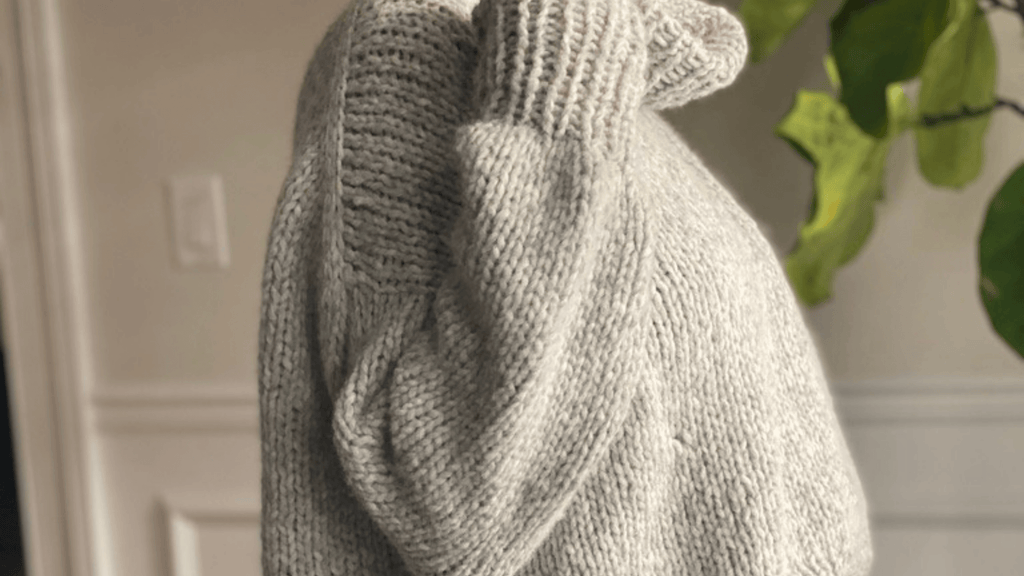“That little label on the inside of all your clothes has the power to help you make a difference to the microplastics problem. It’s as simple as saying no to synthetics.” - The Woolmark Co.
If you have a stronger understanding of the impact your clothes have on our world, you're more likely to be a part of the solution.
Practice becoming a label turner next time you shop, and treat yourself and our earth to sustainable and eco friendly fibers.
Where to start
To better understand the material makeup of your clothes or yarns you are working with, begin by determining if the fiber comes from a natural source or an artificial source.
Natural vs Artificial
Natural fibers come from a plant or animal and include: cotton, wool, cashmere, silk, linen, and hemp. Essentially they are things that come from and have the least impact on the earth once they are disposed.
Artificial fibers are made up of synthetic (plastic or manmade) ingredients and are typically mass produced. The production of artificial manmade fibers have developed over time and can include a range of things like recycled materials to fabrics (which can be a +) to cheaply produced fabrics made with tiny plastics, which is not ideal.
Learn about what micro plastics are and how they harm the environment: https://www.woolmark.com/environment/wool-and-microplastics/
Blends
With many recent innovations in the textile and fiber industry, creating a blend of natural fibers can bring fabric to life. Blending can often make natural fibers more durable, last longer and help the fibers to retain their shape to last longer in your closet.
The one thing to look out for and start prioritizing is fabrics sourced with majority natural fibers:
 Why The Need for a Circular Fashion Economy?
Why The Need for a Circular Fashion Economy?
You might be wondering why does this even matter?
Words cannot describe this problem and it is something you have to see either first or second hard just how damaging the fashion industry has been over the past decade.
One of the most profound videos that illustrates the damages of fast fashion, mass production, and the inability for synthetic fibers to break down is this documentary that helps to show the impact across the globe.
Next time your phone scrolling and killing time, we encourage you to take twenty minutes and watch this video about circular fiber to learn a little bit more: https://www.youtube.com/watch?v=8otUHs-PDOk - save it, bookmark it, share it with someone you think would care!
How We Approach Fibers & Design
Each yarn at Third Piece is selected with careful consideration and thought. There is a range of questions that are assessed to determine if we want to move forward with a fiber we are testing and designing with that range from:
How will it knit up? How is the texture and softness?
Will it last for as many seasons as possible and withstand wear and tear? How do you have to care for it?
Where does it come from? What type of impact will it leave?
At Third Piece, we believe each design starts with the fiber. It is what drives the types of stitches, pattern textures, and silhouettes that we think through with each new style.
Our Own Proprietary Yarn
The first yarn we ever designed with was a super soft super bulky merino, which is now our signature Third Piece Soft Chunky. We soon after expanded this line to include its ‘little” version, Baby Chunky, which is half the gauge, but same soft cozy goodness.
Our yarn is what makes our pieces special and meaningful. If you have ever knit with our ‘Baby Chunky’ or ‘Soft Chunky’ Merino Wool, you know how incredibly soft and warm it is. 100% superfine merino wool spun. We work directly with a mill in Peru to spin for our Third Piece Collections. 
100% wool means a soft, sustainable and safe material without the potential for no plastic synthetics in our oceans, and a fiber that will last a lifetime.
Since starting as a small chunky knit fashion label, we have expanded our line to include an array of yarns and fiber types but always do so with much consideration with you, our community, and the environment in mind.
Our Commitment
At Third Piece, we are committed to slow fashion and have been since 2012. Each piece, whether it be a hat, scarf, sweater or other style in our collection is designed with intention and care, whether Made By Us or Made By You.
A wardrobe of natural fibers will not only last a lifetime, but will help to ensure a true circular life cycle with a low impact on the world around you.
We believe the rewards of knowing where your clothes comes from and who's making them to help to ensure your garments are loved and cared for many seasons to come.
We invite you to join us to continue to think local and sustainable, and to prioritize fibers that are earth friendly, robust, and resilient. A recent NY Times article, “Do you know where you sweater came from?” raises the question…
A recent NY Times article, “Do you know where you sweater came from?” raises the question…
Do consumers finally care about where their clothes come from?
And we’ll wrap it up by asking… do you?


Comments (0)